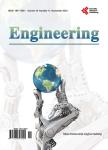Numerical Optimization by Finite Element Method of Stainless Steel/Glass-Epoxy Composite Bolted Joint under Tension and Compression
Numerical Optimization by Finite Element Method of Stainless Steel/Glass-Epoxy Composite Bolted Joint under Tension and Compression作者机构:National Engineering School of Metz University of Lorraine Metz France
出 版 物:《Engineering(科研)》 (工程(英文)(1947-3931))
年 卷 期:2024年第16卷第4期
页 面:102-122页
学科分类:08[工学] 0805[工学-材料科学与工程(可授工学、理学学位)] 080502[工学-材料学]
主 题:Bolted Joint Glass-Epoxy Composite Clearance Hybrid Steel-Composite
摘 要:The aim of this study was to optimize the geometry and the design of metallic/composite single bolted joints subjected to tension-compression loading. For this purpose, it was necessary to evaluate the stress state in each component of the bolted join. The multi-material assembly was based on the principle of double lap bolted joint. It was composed of a symmetrical balanced woven glass-epoxy composite material plate fastened to two stainless sheets using a stainless pre-stressed bolt. In order to optimize the design and the geometry of the assembly, ten configurations were proposed and studied: a classical simple bolted joint, two joints with an insert (a BigHeadR insert and a stair one) embedded in the composite, two “waved solutions, three symmetrical configurations composed of a succession of metallic and composites layers, without a sleeve, with one and with two sleeves, and two non-symmetrical constituted of metallic and composites layers associated with a stair-insert (one with a sleeve and one without). A tridimensional Finite Element Method (FEM) was used to model each configuration mentioned above. The FE models taked into account the different materials, the effects of contact between the different sheets of the assembly and the pre-stress in the bolt. The stress state was analyzed in the composite part. The concept of stress concentration factor was used in order to evaluate the stress increase in the highly stressed regions and to compare the ten configurations studied. For this purpose, three stress concentration factors were defined: one for a monotonic loading in tension, another for a monotonic loading in compression, and the third for a tension-compression cyclic loading. The results of the FEM computations showed that the use of alternative metallic and composite layers associated with two sleeves gived low values of stress concentration factors, smaller than 1.4. In this case, there was no contact between the bolt and the composite pa



